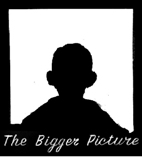This Thursday, 19 June, The Bigger Picture Film Club presents the visually stunning LORE, which is based on the book ‘The Dark Room’ by Rachel Seiffert who will be introducing the film and giving a Q&A afterwards.
LORE follows the harrowing journey of a fourteen-year-old German girl (Saskia Rosendahl) who leads her four siblings across a war-torn Germany after her Nazi parents are imprisoned by the victorious Allies at the end of World War II. When she meets a mysterious young refugee, Thomas (Kai Malina), she must put her trust in the very person she was always taught to hate in order to survive.
Extracts from an interview by Shelia Roberts with the director Cate Shortland:
What drew you to this fascinating story and convinced you to make a movie about it?
‘I was given the book which is called ‘The Dark Room’ by Rachel Seiffert. It’s an astounding book. She was the youngest person ever to be nominated for the Booker Prize. She was 28. It’s three novellas dealing with the impact on the German psyche of the Holocaust, so it was a scary and interesting perspective. The way that Rachel writes it has such beautiful humanism. She reserves judgment and tries through little details to make up the quite profound pieces of history. It gets under your skin and allows you into a perspective that you thought you knew because we have such a didactic idea of Germany.’
What were some of the challenges of adapting the book to film? How do the book and the film differ?
‘The story is based on a true story. Laura (Lore) is Rachel’s mother. Rachel Seiffert wrote the book, but it is her mother’s story. In some ways Rachel would only touch on sexuality or violence, but I think she tried to protect her mother. But I was unafraid and, for example, I looked at the scene between Thomas and Laura or the scene when they kill the fisherman, and I would think okay, what would really happen? What did they really do? What did they want to do? And I’d just go there. The film became a lot more sexual and quite a bit more violent than the original story.’
How did you go about striking the right balance between your characters to give them a sense of humanity without labelling them either good or bad so that the audience can draw its own conclusions?
‘That’s a good question. We were dealing with children, and especially a child of that age, 14, who’s on the cusp of being able to make decisions for herself, but she’s not quite there yet. Even in her age, there’s an ambiguity. At some stages, the audience can think “Oh, the poor child. Look at how she suffers.” And then, the next minute, the audience is confronted with hideous doctrine spewing from her mouth. What Saskia Rosendahl and I tried to do very early on was to play those scenes in exactly the same way and to pull judgement out of it. Otherwise, we’re condescending to the audience and we’re trying to tell the audience how to feel. What I really felt with this film was there had to be a shadow narrative that the audience can inhabit, and there’s room for the audience to think and to make up their own minds. Otherwise, we’re smacking the same kind of redemptive films that have been made before and that does not further any dialogue or any discussion about totalitarianism or even what 1945 was.’
One of the questions the film explores is what it means to be the child of perpetrators, people who committed genocide. How did you approach that as a film maker?
‘Laura is left in this place of absolute moral bankruptcy, and she has to rebuild herself. For me, I think it’s the relationship with Thomas that really opens her heart. She’s meant to hate this person, but she feels this strong desire and connection. It’s such a hard question. If you’re the child of a murderer and someone you know has hunted down women and children, how do you ever sit across the table from him again?
That’s actually what happened in Germany. These men came home, and sometimes were even given jobs running hospitals, and they became politicians. They were often in the highest levels of society. It wasn’t until around 1968, when the younger generation came out – Baader-Meinhof, that whole generation — and said “No. We want to know. We want you to tell us the truth.” That caused this massive overturning of how they spoke about their history.’
Can you talk about the stylistic choices you made to create the look and visual language of the film?
‘We were influenced by two things: documentary film making, because we wanted the film to be fresh and immediate, and the whole aesthetics of National Socialism and the connection of National Socialism with nature. Nature became a character in the film in the same way as it was demythologized within the Nazi Party and was taught to children.
The design of the film starts off very lush. They’re in this beautiful house, which is a Jewish house that the family had taken over. And then, as the film continues, all of the colour is leached out of their clothes. The landscape becomes more and more desolate until they’re standing on mud and there’s almost nothing left. That was our whole rationale. All of the girls had four or six sets of clothes, and the clothes got bigger and bigger and bigger to make the kids look smaller and smaller. And then, they just bleached out the colour until the end when they’re all really faded.’
The film is beautifully shot and it looks very expensive. How did you pull together the financing to accomplish that?
Shortland: It’s a co-production between Germany, Australia and the U.K. We had $4 million. We shot on 16mm and we did things in a very simple way and we kept the crew to a minimum. What we would often do is we’d have all the trucks, the big trucks, and then Adam and I would have a mini-crew and we would take that small crew into the forest with the kids on small utility trucks and stay out there for hours and then come back. There was always this idea of trying to create a very simple and safe environment for the kids to exist so that they didn’t have to act.’
The performances are very strong. Can you talk about how you assembled your cast and what the rehearsal process was like?
‘We knew that the character of Laura had to be really astounding. She’s in every scene. And so we looked all over Germany. We looked at over 300 girls. Saskia Rosendahl came in during the last week. She’s a dancer with no acting experience. She’s got incredible natural grace and strength and is very intelligent. She played off her instincts. She’s done some drama courses at school, but that’s very different to being on a film set.
Kai Malina had been in the Michael Haneke film, The White Ribbon.
We had a mixture of people who had experience and Saskia who had no experience. She was really brave. In rehearsals, we started off with physical movement and song. They sang all these propaganda songs. They learned about fifteen propaganda songs and all the National Socialist dances. They learned how people would eat in 1945 – how children would sit and their eye contact. We talked about what school would be like. They watched a lot of documentaries about families and about Bund Deutscher Mädel, the German Girls League. We tried to build it up gradually from the skin instead of starting with the text, so that they already had an organic idea of the world before we introduced it and said, “Okay, now you’ve got to say this.”
You did a lot of research for this film. What was that experience like?
‘It was horrendous. Do you know what upset me the most? It was the pregnant women. How do you massacre pregnant women? They talked about how in the gas chambers the women would go into labour. Some of the stuff was just horrendous. You can’t get that out of you. You just have to live with it. I always thought that that’s what those children would live with, because as soon as they were old enough, they would look at everything. Rachel would look at everything. I’ve met her. I met her in London. She became a big peace activist and she married a professor at Oxford. She’s an incredibly liberal, beautiful woman who must have done so much soul searching.’
What was the hardest part of the film to shoot?
‘I could have done without the baby crying so much. That was really hard. He was such a beautiful little baby. His mother was always on set. But, as soon as he’d see Saskia, he’d start to cry because he knew that meant work, so that was really tricky and a bit painful for him and us.’
What is the greatest thing you learned from this experience?
‘Not to judge, to try not to judge. Try and withhold your judgement, because as soon as you think you know something, you’re shutting down. I’m a really judgemental person, and it just dumbs everything down. It doesn’t create any room for interrogation or investigation. With this whole process, it’s so easy to say “evil Nazi monsters,” but as soon as we do that, we take away the fact that it was individuals committing individual acts of murder. They had children, and what does that do? As soon as you generalize, they become monsters. It doesn’t allow you to understand it in any kind of sophisticated way.’
How did you feel when you heard your film was the official Oscar entry for Australia for Best Foreign Language Film?
‘It was very exciting. There were 71 films so it was really tough. But it’s just great for the film to be out and for people to see it and talk about it. It’s what you want.’
LORE 2012 Cert 15 118 mins
Director: Cate Shortland
Cast: Saskia Rosendahl, Kai Malina
FREE RAFFLE PRIZE kindly donated by Rye Books
FILM NOTES
Details
Thursday 19 June
7pm: music/bar with drinks and themed snacks
7.50: introduction to film
8pm: film

Tickets £7 online from WeGotTickets
Or in person from:
Push Studios, 7-19 Blackwater Street SE22
Rye Books, 45 Upland Road SE22
East Dulwich Tavern, 1 Lordship Lane SE22
or on the door.
Upstairs at the East Dulwich Tavern, 1 Lordship Lane, East Dulwich, SE22
For more details and future films visit The Bigger Picture Website

![]()



